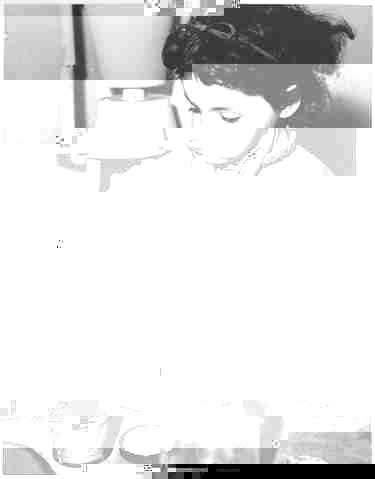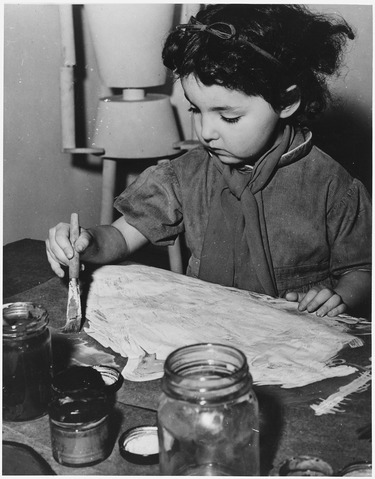The Meaning in the Paint Exhibit inspired this blog post
Concerning digital history, a lot of images we see we take at face value. Say a portrait of a woman and her children or a picture of a man and his instrument. We see exactly those things: a mother of two and a talented musician. At least, that is what we assume we see. There is more to these images than what is on the surface and that is what I have discovered. “Screen essentialism” 1 is the name of the game and a wary one. Code can be looked at and interpreted in various different ways, but we only choose to see it in the one way it is displayed. 2
I stumbled upon this image when I was looking through my class resource list. Originally, I had wanted to find a mural or painting that looked at American culture or defined it in some regard. (The PWA (Public Works Administration) and FAP (Federal Art Project) were on my mind for a while.) As I was about to give up looking through the Wikimedia source list, I accidentally fumbled around the mouse-pad and clicked on this image. Honestly, could not have thought of a better picture!
Upon first looking at the image, it conveyed the information I wanted it to. It showed me a child painting; a representation of the idea of an American culture coming out of tough times and improving upon the arts that would focus on the American culture. I felt that the future was being entrusted to this young lady while she thought of what to paint. What she is focusing on is a pure white painting. Ideas of a vast emptiness waiting to be field came to mind; the possibility of making a new future and putting that in the hands of the little girl’s generation.

The glitching process, which involved removing and adding code to an image, was tough to go through as I had to find a way to change the file type in Windows. Successfully, I was able to remove some code behind this image and generated this image.
The meaning behind glitching is clear: to bring to the front information that is not necessarily seen. Here, the girl’s painting has become obscured. To me, the image resonated with the idea of censorship and the line artists had to toe in order to follow the government’s regulations as well as get their own ideas out there. While I would not expect radical ideas from a preschooler–then again, what can you expect–the splotch of stark white makes me think of how artists had to conform to what the government wanted in order to keep the public happy and inspire them in their time of need.
Behind the girl sits a mannequin. I interpreted this as the government watching over the artists work. Now that section has been jumbled up and mismatched, showing how the artists were able to get away with some things. Along with this, the color also fades from the grays, blacks and whites into a pure stark white, representing an uncertainty in the relationship between artist and government on what they could do. It could also point to the future that lay ahead for the nation.
Glitching is a very useful tool as it can show the instability of historical sources; rather, not everything is picture perfect and has another meaning that may lay hidden until someone makes a move to uncover that meaning. Another method mentioned by Michael Kramer is deformance (a portmanteau or combination of ‘deform’ and ‘performance’.) It goes hand in hand with glitching as something is being removed, except it is more intensive. 3 I find this method more appealing because it makes you really think about the image instead of looking at it and teaches the importance of every strand that an image has which leads to a piece of information. It is easier to look at the face blindly and say that you know the meaning, but I like having the extra insight and thought to put behind my interpretations and inferences.

